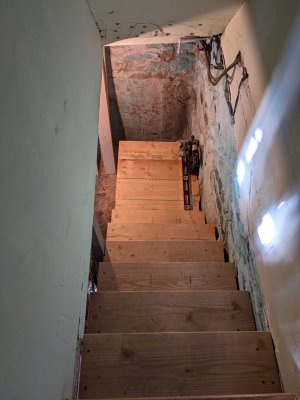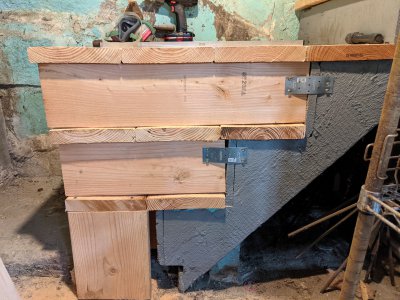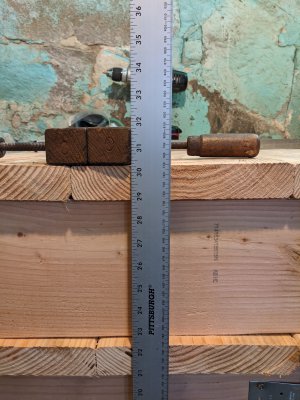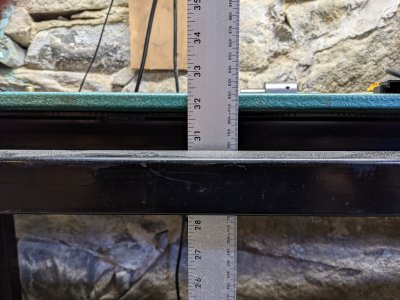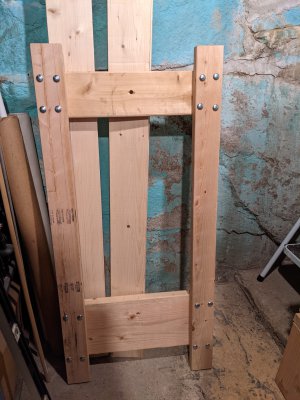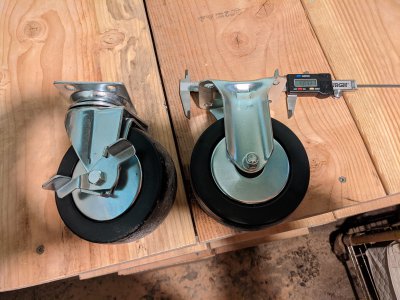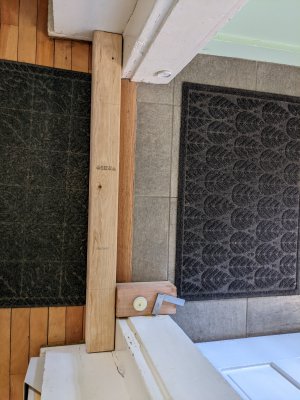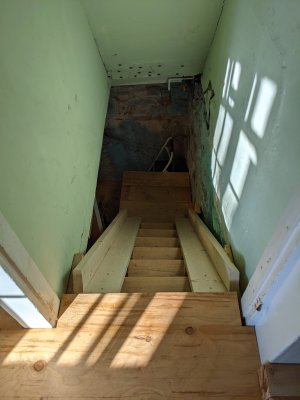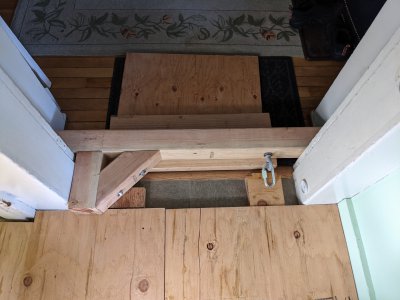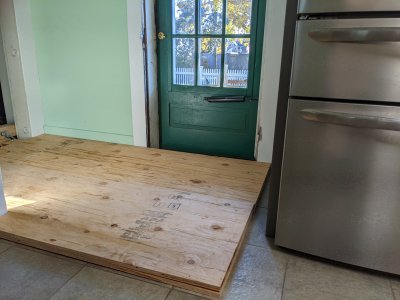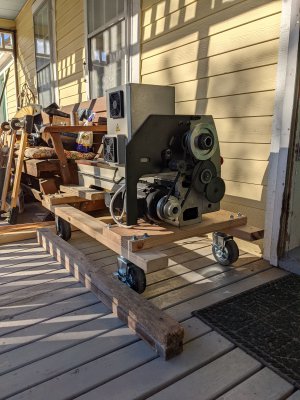Stuff happened... So didn't get to work on this much. Three days ago, I went to the garage to see if I could use my table saw to cut the 44 degree angles for the ramp blocks. As I was turning the angle adjust crank on the saw, it was getting harder and harder to do. Then heard a crack sound. The 30 year old plastic hand crank failed. The D section gave up and the hub cracked. Not going to get another plastic wheel.
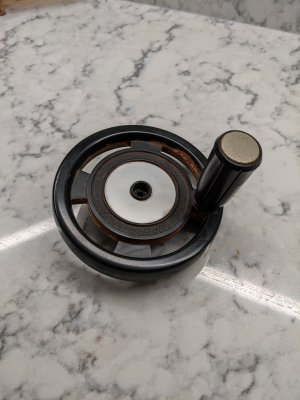
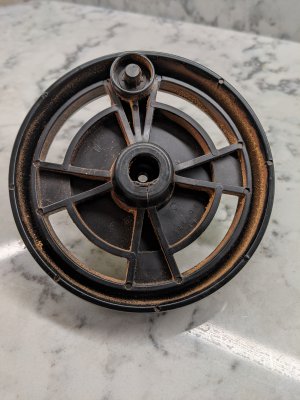
Looked around for some hand wheels and saw the cost was pretty high, higher than what I wanted to pay on a saw that I hadn't used in 15 years. Decided to make a handle out of scraps that I could find around the shop.
Design was a crank lever with a rotating handle. Hub was a piece of A36 1x1 stock cut to 1.125" long. Drill 1/2 diameter hole 5/8" deep. Drill through hole for a 10-32 screw, matching the D shaft. Put in a 1/4-20 set screw. Lever was a piece of rusty scrap 1/8" x 1", cut to 3.5" long. After the hub was complete, I welded the lever to the hub. Welds weren't pretty, but they are good enough. You are looking at version 2. Version 1 I did on my mini-lathe and had an unexpected flub up. Somehow the taper in the tailstock was not seated well enough and the drill wallowed around. Had a 0.560" hole. No good. Supposed to be 0.50" Did it over on the mill. Came out as I had expected.
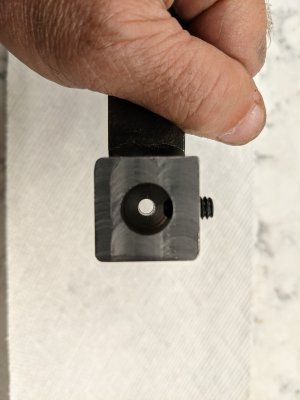
Used a piece of 1/2" rod 3.5" long and single point threaded one end to 3/8-16 for a length of 5/8". At the other end, it was drilled and tapped for 1/4-20. Then made a thick washer that was 3/4" OD, and 1/4" ID.
Finally cut a piece of 1/2" PVC pipe that was just smaller in length than the distance between the lever and the washer. I present to you - scrap box hand crank.
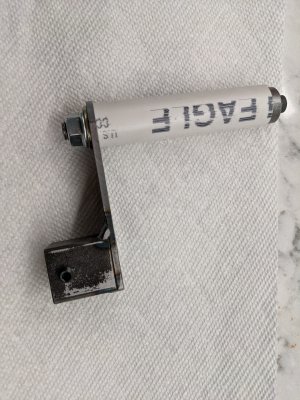
The hand crank fit perfectly on the angle D-shaft. This fixed my saw. So I cut some wood. Cut the 44 degree (or close) pieces for the stairs. Also cut the wood for the trolley. Finally get to put somethings together tomorrow.
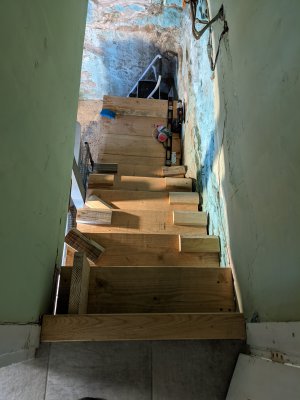
Now have the eye-bolts and hopefully all the hardware to proceed. Definitely fall here. Temperature is only in the 50's during the day time. (10C)


